
To grow bamboo in a pot
on the balcony or terrace
Contents
If the invasive reputation of bamboo frightens you and you have a small garden, growing it in a pot outside remains a good alternative for terraces or small zen, Japanese or contemporary gardens. Small in size, evergreen, hardy, and low-running (cespitose) like Fargesia, they are therefore easy to contain in pots. Dwarf bamboos (1.5 m) or small bamboos (3 m) will be perfect for quickly creating screens of greenery. As a privacy screen, windbreak, or noise barrier on your balcony, terrace, or even in a small garden, they will add an exotic touch all year round.
You will find the bamboo for pot that suits you among those selected for their compact habit and their graphic and decorative foliage.
From varieties to favour for drainage to substrate and container choice, follow our tips for successfully growing a bamboo in a pot.
The best exposure
If bamboo tolerates sunlight as long as it is not deprived of moisture, it enjoys partial shade, especially in the southern regions of France. Avoid overly drying exposures as it fears scorching sun and summer drought.
Reserve for it a spot on the terrace or balcony, a place sheltered from cold drafts. Bamboo will only take a few years to reach its full development. Its rapid growth will allow you to quickly green up a terrace or shield yourself from prying eyes, depending on its height at ripeness. Grouped in containers, they can form elegant separation hedges.

Bamboo grown in pots.
To thrive, bamboo needs a rich substrate that remains fresh and retains water in summer, yet is well-draining. It prefers slightly acidic soil.
With good hardiness (down to -25°C for some), bamboo withstands frost and can spend winter outdoors. Less hardy species (-10°C) should be stored in a bright, frost-free room, such as a conservatory during the cold season, if temperatures drop below -15°C.
Read also
Bamboos: plant, pruning, maintainWhen to plant bamboo in a pot?
Bamboos grown in containers can be planted all year round, except during frost and extreme heat. To encourage recovery, however, prefer late summer and autumn to plant your potted bamboo.
Discover other Bamboos
View all →Available in 2 sizes
Available in 3 sizes
Available in 3 sizes
Available in 1 sizes
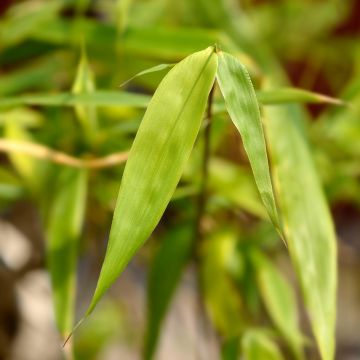
Available in 3 sizes
Available in 2 sizes
Available in 1 sizes
Available in 2 sizes
Available in 1 sizes
Available in 1 sizes
How to plant it properly?
Pot cultivation of bamboo is easy in rich, humus-bearing soil. Bamboo is a plant that is thirsty for water and nutrients; it loves fertile soils. The substrate therefore conditions the successful establishment and development of bamboo.
Provide it with a rich substrate
Bamboo loves fertile soils. When planting, use a good potting soil for container plants or prepare a homemade substrate made up of equal parts compost, horticultural soil, and sand. The addition of fertiliser for potted bamboo is important. In early spring and autumn, fertilise with a slow-release bamboo fertiliser (rich in nitrogen) or add compost to stimulate the growth of its culms.
What container to choose?
The size of the container should be sufficient with a minimum depth of 50 cm. You can choose according to your preferences a round pot of 30 or 35 litres or a large trough of 60 × 60 cm, preferably in PVC. Ensure that the bottom of your container is well-drained, as if the roots stagnate in water, they will eventually rot.
The right steps to plant bamboo in a pot
- If necessary, place a geotextile fabric at the bottom and on the sides
- Spread clay balls or gravel to a thickness of 10-15 cm
- Prepare a mixture of equal volumes of well-decomposed compost, good planting soil, and good garden soil
- Plant the root ball at the level of the collar and fill in with substrate around the root ball
- Firm down well and water generously
- Spread a mulch of pine bark to keep the base cool
Keep it cool!
Potted bamboo requires water, especially in dry, hot, or windy weather. In summer, during heatwaves, an adult bamboo planted in a pot may need nearly 5 litres of water per day. Therefore, ensure that the soil does not dry out between waterings; the substrate should be kept moist but never waterlogged.
→ Find our tips on how to properly water bamboo in a pot.
Small varieties like Fargesia murielae ‘Bimbo’ or Fargesia nitida Jiu will thrive beautifully if the soil is never allowed to dry out too much… nor become waterlogged; bamboo does not like to have its feet in water during winter! If it remains outside all year, winter rains will suffice to water the plant.
Using organic pine bark mulch for the first two years helps to keep the soil moist and cool. Subsequently, its dry leaves will fall, forming a natural mulch at the base of the bamboo.

Pine bark mulch.
And keep it warm in winter!
Although hardy, bamboo is sensitive to cold winds in winter. Be sure to protect it with a fleece cover during freezing nights. During the winter period, do not water. Winter rains will be sufficient to maintain moisture at the base of your bamboo. In the event of a severe and prolonged frost (-15 °C), bring your bamboo into a bright, frost-free room.
Read also
How to divide and multiply your bamboos?Which bamboo to choose?
For planting in containers or large pots, prefer clumping species with non-spreading rhizomes over spreading bamboos: they form a well-compact clump, have dense foliage, and are easily manageable with annual pruning. Much easier to contain in pots, these are the ones to choose for a serene container culture!
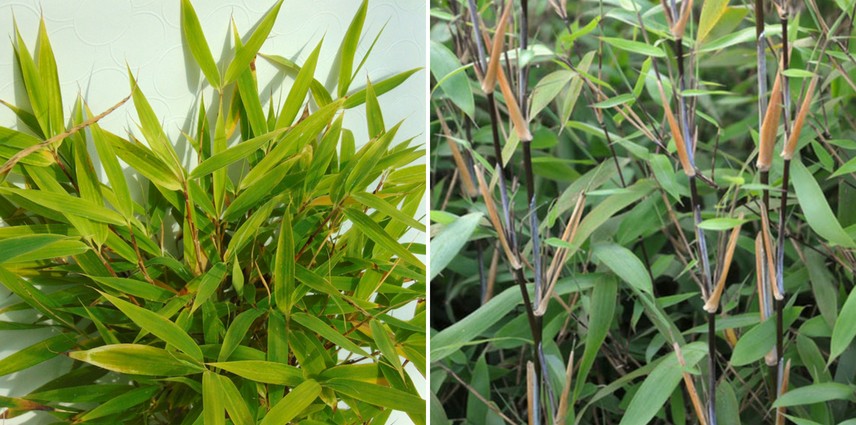
Fargesia muriale and nitida are well-suited for pot cultivation.
This type of bamboo will therefore be quite suitable for creating beautiful screens of evergreen greenery in small gardens, on terraces, and balconies. Choose your species wisely: some small bamboos like Pleioblastus viridistriatus Vagans, which are very invasive, could quickly burst the pot.
Phyllostachys, which is a very spreading species with strong growth, can succeed in pots provided it is placed in a sufficiently large container: in pots, these bamboos will be limited in their growth and will never reach 10 m in height.
Their evergreen foliage, graphic silhouette, and colourful, bicoloured or striped culms suit all decors. Dwarfs (1.5 m), small (3 m) or medium (3 to 9 m), from the most classic to the most exclusive, you will surely find among our selection of bamboos for pots the one that will enhance your terrace or balcony.

Fargesia nitida Jiu - Non-running Bamboo
- Height at maturity 2,50 m
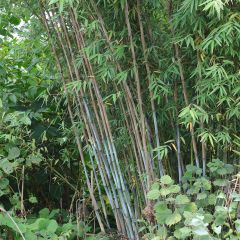
Fargesia papyrifera Blue Dragon - Non-running bamboo
- Height at maturity 6 m
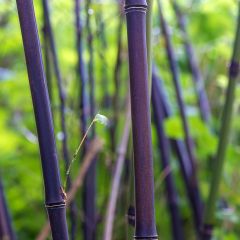
Black bamboo - Phyllostachys nigra
- Height at maturity 6 m
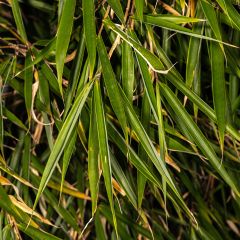
Fargesia rufa - Non-running Bamboo
- Height at maturity 2,75 m
Caring for potted bamboo
Bamboo in pots requires little maintenance and care. In summer and during dry periods, water generously, never allow the substrate to dry out. If the leaves tend to yellow, this may indicate an excess of lime: add heather soil to the surface.
In the first few years, renew the mulch to maintain substrate moisture in summer and insulate the base from frost in winter.
Pruning bamboo is not necessary. However, they tolerate being pruned well in spring or autumn to limit their growth, remove dry culms, and encourage the plant to develop entirely new foliage.
- Subscribe!
- Contents
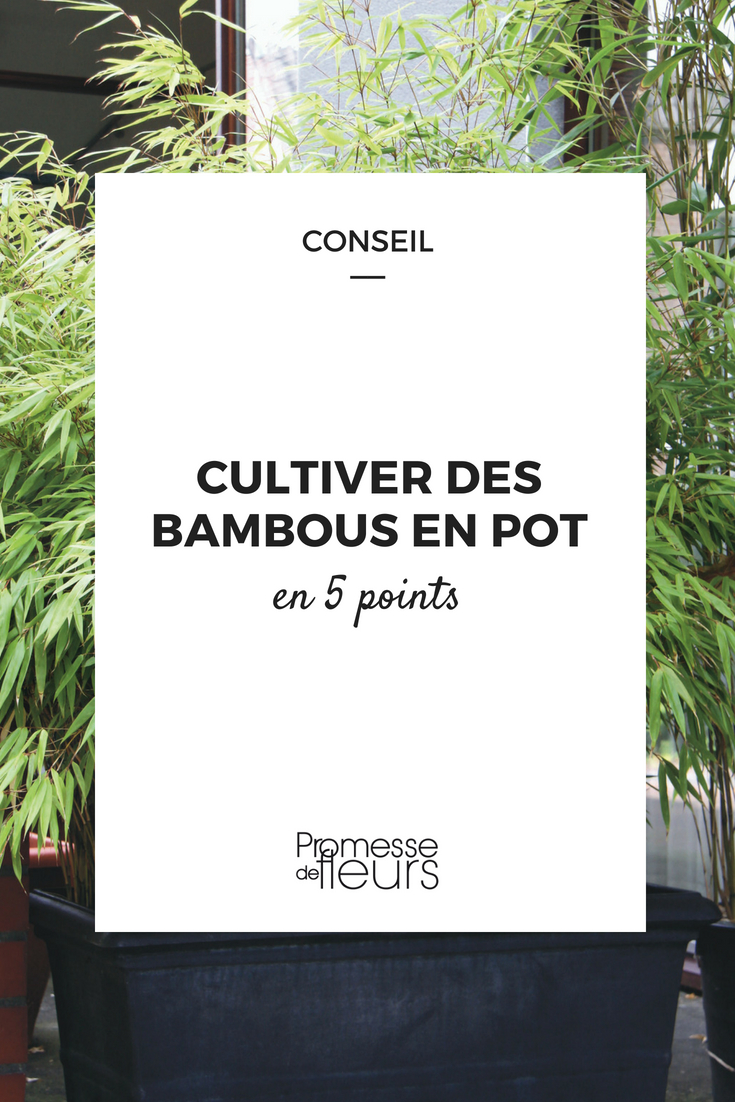































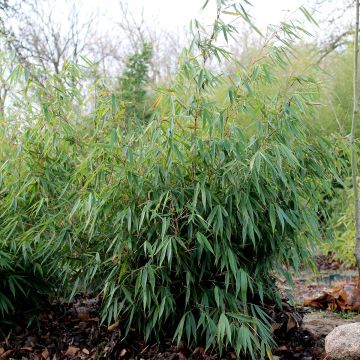
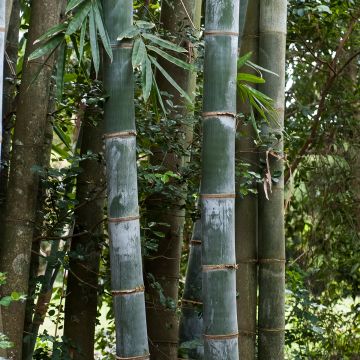
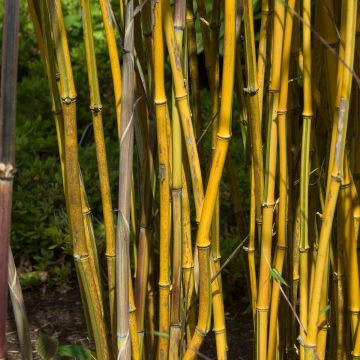
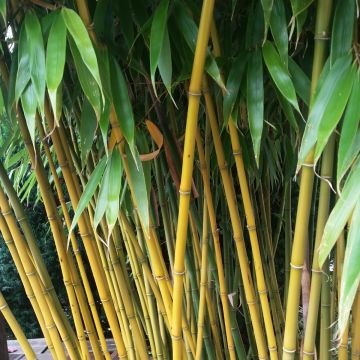
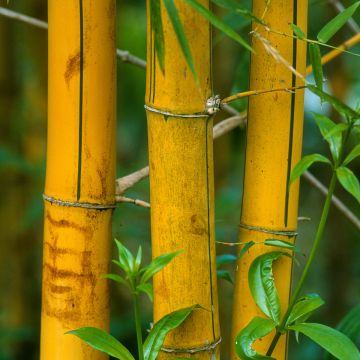


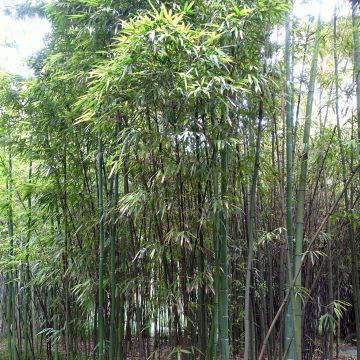
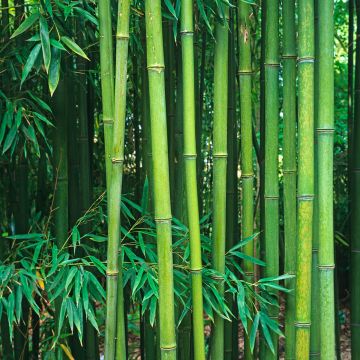
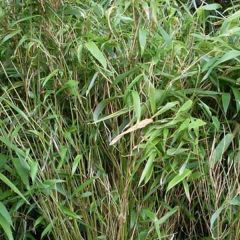
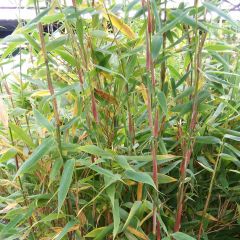
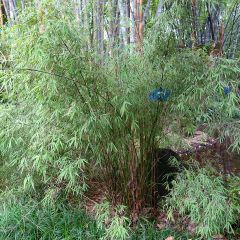
Comments